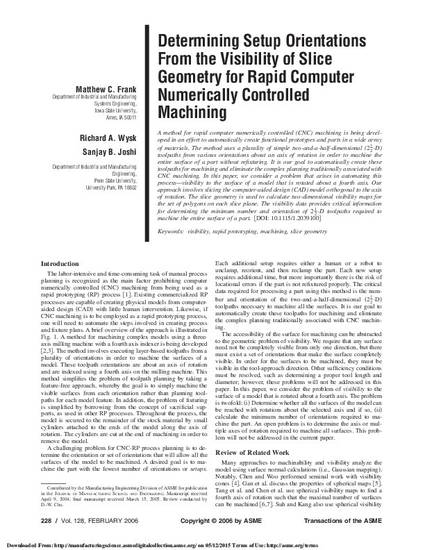
A method for rapid computer numerically controlled (CNC) machining is being developed in an effort to automatically create functional prototypes and parts in a wide array of materials. The method uses a plurality of simple two-and-a-half-dimensional (21/2-D) toolpaths from various orientations about an axis of rotation in order to machine the entire surface of a part without refixturing. It is our goal to automatically create these toolpaths for machining and eliminate the complex planning traditionally associated with CNC machining. In this paper, we consider a problem that arises in automating this process - visibility to the surface of a model that is rotated about a fourth axis. Our approach involves slicing the computer-aided design (CAD) model orthogonal to the axis of rotation. The slice geometry is used to calculate two-dimensional visibility maps for the set of polygons on each slice plane. The visibility data provides critical information for determining the minimum number and orientation of 21/2-D toolpaths required to machine the entire surface of a part.
Available at: http://works.bepress.com/matthew_frank/1/

This article is from Journal of Manufacturing Science and Engineering, Transactions of the ASME 128 (2006): 228, doi: 10.1115/1.2039100. Posted with permission.